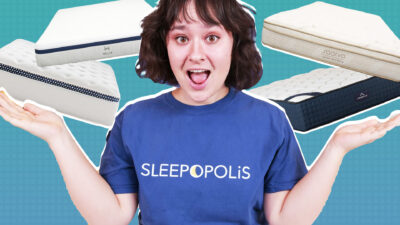The original Nectar and original Casper mattresses are two of the most popular bed-in-a-box options on the market today. And while they’re both considered to be high-quality products built with serious Zzz’s in mind, they’re actually pretty dissimilar. So, which one is right for you? Well, I’m so glad you asked!
In this comparison, I’m going to analyze all the major similarities and differences between the original Nectar and Casper mattresses. From their unique builds to their distinct feels, we’re going to cover every last thing so you can figure out which of these beds was tailor-made for you.
Short on time? Then you can hop to my summary at the end of this page.
Casper vs Nectar
Product
Firmness
Score
Casper vs Nectar

Nectar vs Casper: Which is Better for You?
I want to kick things off by recommending each bed to a few different sleepers. I would also encourage you to check out my full Nectar mattress review and Casper mattress review for more info.
Who Should Buy Casper

- Back sleepers who prefer a more “on top of the bed” feel might like the Casper mattress.
- Combination sleepers might enjoy the Casper’s responsive feel, which should make it easy to change positions at night.
- If you struggle with back pain, the Casper is a great choice for you. Its zoned support system should help you keep your spine straight at night, which can help prevent or relieve back pain.
We recommend this mattress for the following sleeper types: Financing options are available for this mattress. "From the delivery of the box to the magical unfolding of the king size mattress to the first time laying on the bed, all smiles here! I have traveled for work for years, often sleeping on different beds at different hotels night after night."
The Casper Original is an all-foam mattress that is a great option for back sleepers who want a balance of support and pressure relief. Combination sleepers will appreciate this mattress's responsiveness, which makes it easy to change positions throughout the night.
We recommend this mattress for the following sleeper types: Financing options are available for this mattress. "From the delivery of the box to the magical unfolding of the king size mattress to the first time laying on the bed, all smiles here! I have traveled for work for years, often sleeping on different beds at different hotels night after night."
The Casper Original is an all-foam mattress that is a great option for back sleepers who want a balance of support and pressure relief. Combination sleepers will appreciate this mattress's responsiveness, which makes it easy to change positions throughout the night.
We recommend this mattress for the following sleeper types: Financing options are available for this mattress. "From the delivery of the box to the magical unfolding of the king size mattress to the first time laying on the bed, all smiles here! I have traveled for work for years, often sleeping on different beds at different hotels night after night."
Casper Original Mattress
Material
Foam
Trial Period
100 nights
Shipping Method
Free shipping
Firmness
Firm: 7/10
Warranty
10-year limited warranty
Price Range
$$$$$
Couples
This bed has great motion isolation so you will not feel your partner tossing and turning at night.
Back Pain
This bed is perfect for anyone suffering from back pain.
Financing Options
Casper Original Mattress

Material
Foam
Warranty
10-year limited warranty
Firmness
Firm: 7/10
Shipping Method
Free shipping
Trial Period
100 nights
Price Range
$$$$$
Couples
This bed has great motion isolation so you will not feel your partner tossing and turning at night.
Back Pain
This bed is perfect for anyone suffering from back pain.
Financing Options

Casper Original Mattress
Material
Foam
Firmness
Firm: 7/10
Trial Period
100 nights
Warranty
10-year limited warranty
Shipping Method
Free shipping
Price Range
$$$$$
Couples
This bed has great motion isolation so you will not feel your partner tossing and turning at night.
Back Pain
This bed is perfect for anyone suffering from back pain.
Financing Options
Who Should Buy Nectar
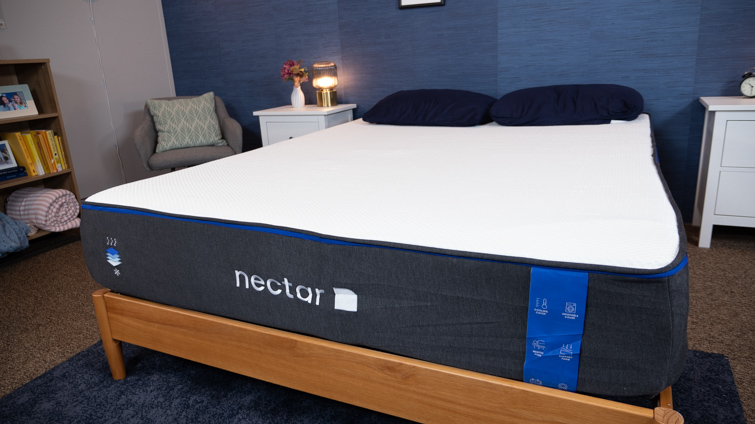
- Side sleepers should like the Nectar, as it’s one of the best memory foam mattresses on the market right now and will offer plenty of relief around sensitive pressure points.
- Couples will enjoy how wonderful of a job the Nectar does isolating motion transfer, which means you won’t feel disturbed by a restless bedmate on this mattress.
- Back sleepers who prefer a “hug-like” feel might enjoy the Nectar mattress.
We recommend this mattress for the following sleeper types: Financing options are available for this mattress. I dreaded paying for a new mattress but my old one was 15 years old…buying a Nectar was the best choice I could have made! It is so comfortable and didn’t cost an arm and a leg. I would absolutely recommend this mattress to anyone!
The original Nectar mattress is a pressure-relieving, yet supportive, bed. It’s made with a thick layer of gel memory foam, which allows the sleeper to really sink into its surface.
We recommend this mattress for the following sleeper types: Financing options are available for this mattress. I dreaded paying for a new mattress but my old one was 15 years old…buying a Nectar was the best choice I could have made! It is so comfortable and didn’t cost an arm and a leg. I would absolutely recommend this mattress to anyone!
The original Nectar mattress is a pressure-relieving, yet supportive, bed. It’s made with a thick layer of gel memory foam, which allows the sleeper to really sink into its surface.
We recommend this mattress for the following sleeper types: Financing options are available for this mattress. I dreaded paying for a new mattress but my old one was 15 years old…buying a Nectar was the best choice I could have made! It is so comfortable and didn’t cost an arm and a leg. I would absolutely recommend this mattress to anyone!
Nectar Mattress
Material
Foam
Trial Period
365 nights
Shipping Method
Free shipping
Firmness
Medium-soft: 6/10
Warranty
Lifetime warranty
Price Range
$$$$$
Joint Pain
This bed is perfect for anyone suffering from joint pain.
Hip Pain
This bed is perfect for anyone suffering from hip pain.
Back Sleeping
Ideal for lightweight and average weight back sleepers.
Side Sleeping
Ideal for lightweight and average weight side sleepers.
Financing Options
Nectar Mattress
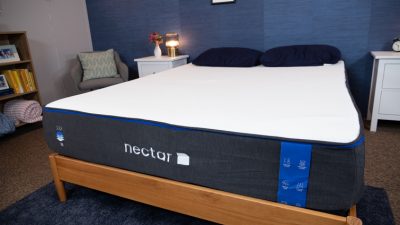
Material
Foam
Warranty
Lifetime warranty
Firmness
Medium-soft: 6/10
Shipping Method
Free shipping
Trial Period
365 nights
Price Range
$$$$$
Joint Pain
This bed is perfect for anyone suffering from joint pain.
Hip Pain
This bed is perfect for anyone suffering from hip pain.
Back Sleeping
Ideal for lightweight and average weight back sleepers.
Side Sleeping
Ideal for lightweight and average weight side sleepers.
Financing Options

Nectar Mattress
Material
Foam
Firmness
Medium-soft: 6/10
Trial Period
365 nights
Warranty
Lifetime warranty
Shipping Method
Free shipping
Price Range
$$$$$
Joint Pain
This bed is perfect for anyone suffering from joint pain.
Hip Pain
This bed is perfect for anyone suffering from hip pain.
Back Sleeping
Ideal for lightweight and average weight back sleepers.
Side Sleeping
Ideal for lightweight and average weight side sleepers.
Financing Options
Nectar vs Casper: Similarities and Differences
Next, I want to describe the most important similarities and differences between these two beds.
Main Similarities
- The Nectar and Casper are both foam bed-in-a-box mattresses. While these beds use foam in different ways, both are going to feel much gentler than a hybrid mattress or innerspring mattress.
- Both mattresses are great options for anyone looking for a mattress for shoulder pain. They both offer great pressure relief in the shoulder area.
- These beds fall into a similar price range, and both are fairly affordable.
- Neither bed will offer quite enough support for heavy sleepers (over 250 pounds). I’d recommend these folks check out one of our best mattresses for heavy people instead.
Main Differences
- The Nectar mattress uses more memory foam than the Casper mattress, so it’s ideal for sleepers looking for a slow-moving, soft foam bed that offers plenty of sinkage.
- The Casper offers zoned support, which means it’s firmer at the hips and softer at the shoulders. This is ideal for sleepers who struggle with back pain.
- I think the Casper feels a little bit firmer when sleeping on it than the Nectar.
Nectar and Casper Mattress Feel Comparison
In this section, I’m going to do my best to give you a sense of how these beds feel. To do this, I’m going to focus on factors like firmness, pressure relief, bounce, and sinkage.
But before we get into that, a small note to say that all of these feel factors are inherently subjective and could change depending on one’s body size, shape, and weight. Therefore, my read of these beds could very well differ from your own!

Nectar
I gave the Nectar’s initial feel a 6 out of 10 firmness scale (where 1 is super soft and 10 is ultra-firm). This marks it as just below the industry standard of 6.5 for medium firmness. I put it right between medium-soft and medium-firm. Like most traditional memory foam mattresses, the Nectar gets softer the longer you lie on it. Over time, its foams will start to conform to your body and give this bed more of a medium-soft feel.
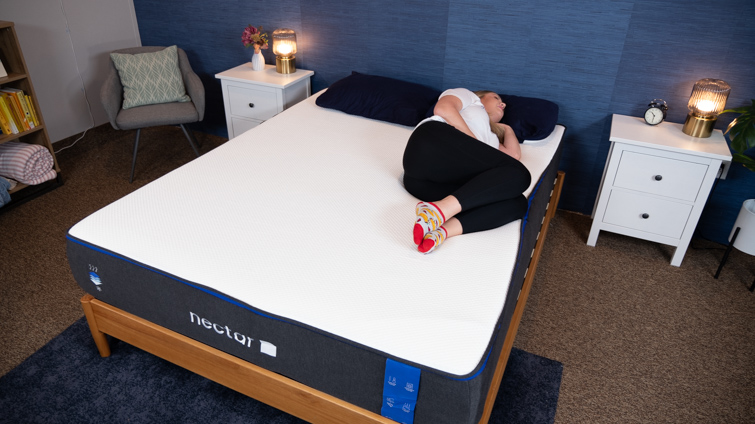
Once you sink into your Nectar it should have a plush, pressure-relieving feel. While this could be great for side or back sleepers who struggle with joint pain, it’s not likely to work for strict stomach sleepers. These folks typically prefer a firmer structure that helps them achieve a neutral spinal alignment. In general, I’d recommend the Nectar to any memory foam lovers looking for a cushioning feel.
Casper
I gave the Casper a 7 out of 10 on the firmness scale. It initially felt softer to me when pushing into its foam layers, but when I laid on the bed it felt firmer and lifted me up. However, unlike the Nectar, this bed does not soften up as you lie on it. So I’d call the Casper a medium-firm to firm mattress. The Casper has more of a “balanced” feel than the Nectar. You should feel much more “on top of” than “stuck in” this bed.
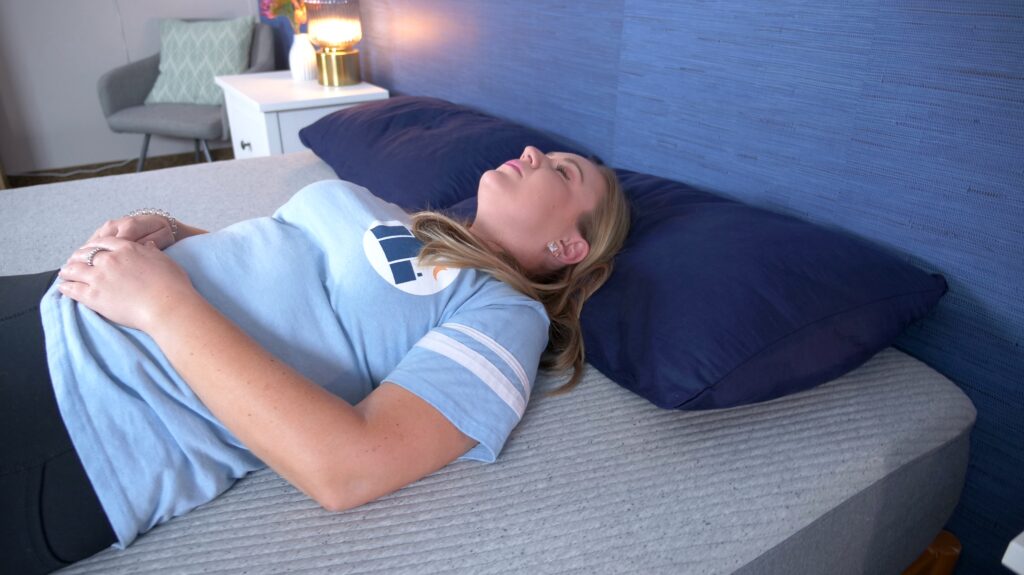
I’d recommend this feel to combination sleepers and back sleepers. Combo sleepers should find it easy to move around and change positions on this bed. And back sleepers should like the balance of pressure relief and support the Casper offers. Some strict side sleepers, however, may find that the bed doesn’t provide the deep pressure relief they need at the shoulders and hips.
Comparing What it’s Like to Sleep on the Nectar and the Casper
To give you an even better idea of what these beds feel like, I tested them in all of the main sleeping positions. Take a look below to see how they felt.
Nectar
Back — The Nectar felt really comfortable on my back. I could feel its foams contouring to my lower back and providing some nice pressure relief.
Side — When lying on my side, I sunk into the Nectar’s top foams and felt some great pressure relief. I think this bed is a great fit for side sleepers.
Stomach — The Nectar felt too soft on my stomach, I could feel my hips sinking into the bed and creating a bend in my back. In my opinion, neither the Casper or the Nectar is supportive enough for most strict stomach sleepers. I’d advise these folks to check out our best mattresses for stomach sleepers to find a better fit.
Body Weight — This bed will likely feel firmer the lighter you are and softer the heavier you are. In general, I’d steer heavier people (above 250 pounds) towards a firmer mattress that offers coil support. One of our best innerspring mattresses might do the trick.

Casper
Back — The Casper’s zoned support system really shone when I was on my back. I could feel my hips being lifted up and out of the bed, providing plenty of support in my lumbar region.
Side — I found the Casper comfortable when I was on my side, but I think a lot of side sleepers would prefer something softer for deeper sinkage. If you alternate between your side and another position at night, I think this bed could work for you.
Stomach — Like the Nectar, the Casper is a bit too soft for strict stomach sleepers, mainly those weighing over 130 pounds. I think lighter combination sleepers who only spend part of the night on their stomachs might like this bed.
Body Weight — The Casper will likely feel firmer to lighter people and softer to heavier people. Personally, I’d recommend this bed mainly for average-weight sleepers. Lighter people might prefer a softer mattress feel, and heavier sleepers likely need more support.

Comparing Nectar and Casper Prices
Of course, your decision might come down to the price difference between these two beds. For a full pricing comparison, check out the table below. And be sure to check out our Casper mattress coupon or the Nectar mattress coupon page to get a deal on the new mattress of your choice.
Prices listed are before discount or offer for each size.
| Size | Nectar | Casper |
|---|---|---|
| Twin | $599 | $895 |
| Twin XL | $769 | $995 |
| Full | $899 | $1,195 |
| Queen | $999 | $1,295 |
| King | $1,299 | $1,695 |
| California King | $1,299 | $1,695 |
Comparing Nectar and Casper Mattress Materials
Next, let’s take a peek under the covers of these all-foam beds to see what they’re made of. I’ll be giving a brief rundown of each bed’s construction below,
Nectar
Cover — The Nectar’s Tencel cover is quilted with a bit of memory foam that does a great job conforming to your curves and offering initial pressure relief. This cooling cover also helps encourage airflow throughout the mattress. The bottom of the Nectar is made with grip fabric to ensure it doesn’t slip or slide on your bed frame.
Comfort Layer — Beneath the quilted cover, you’ll land on a layer of gel-infused memory foam. This cooling gel memory foam has a slow response to pressure, so you’re likely to sink into it for deep pressure relief at the shoulders, hips, and lower back.
Transition Layer — Next up is an adaptive transition layer that is a little more responsive than the memory foam layer above it. This layer should prevent you from feeling swallowed by your bed.
Base Layer — And finally, we land on a layer of high-density poly foam. This dense material provides the bed with its stability and shape.
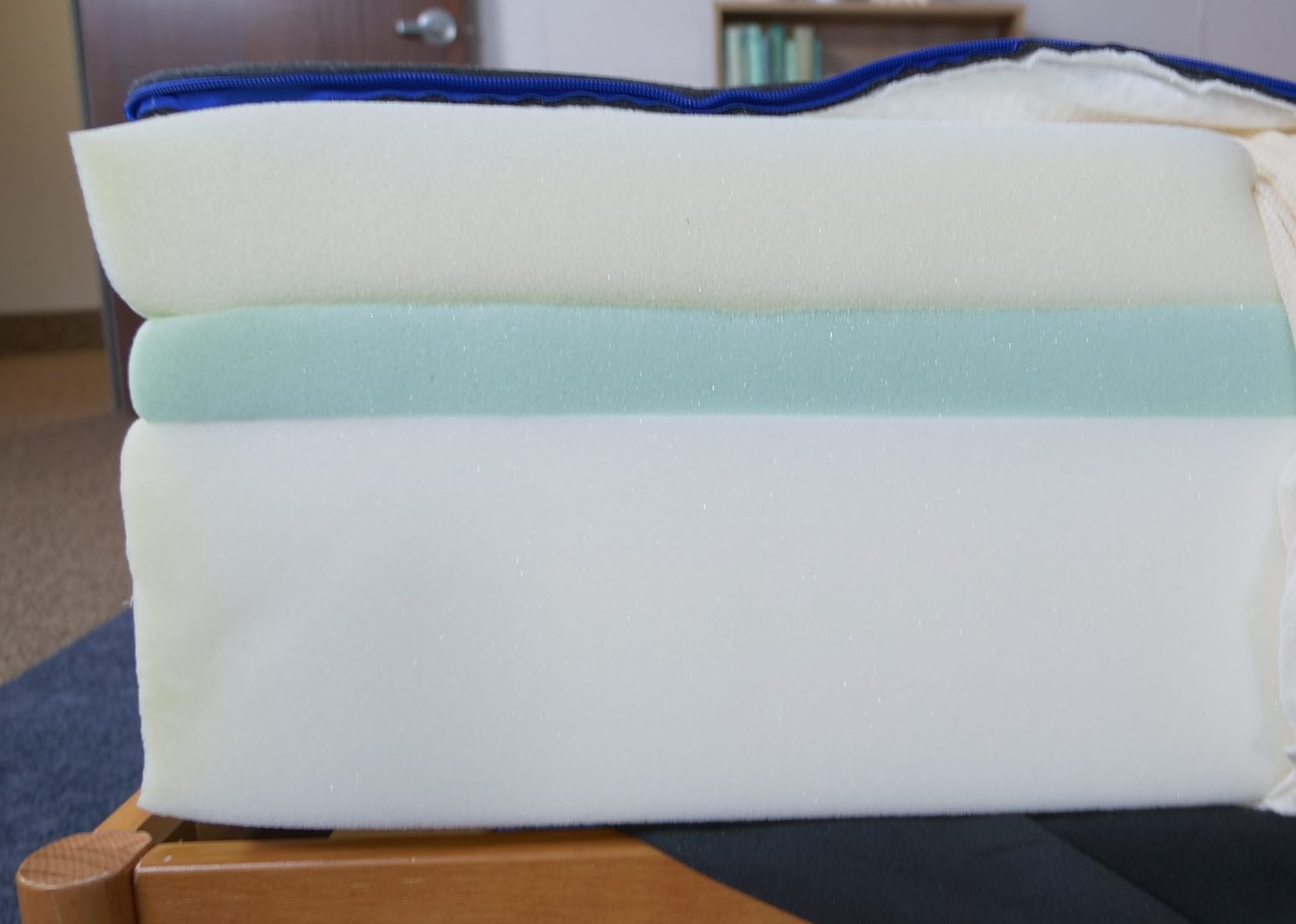
Casper
Cover — The Casper’s cover is made from a knit polyester blend, so it has a soft and cozy feel.
Comfort Layer — Beneath the cover, you’ll find a layer of AirScape foam. This is an open-cell foam with a pretty similar feel to latex foam in that it’s bouncy, responsive, and naturally cooling. The Casper Original’s comfort layer is very different from the Nectar’s, as it works to position the sleeper more “on top” of the bed than “in” it.
Contour Layer — Next up is a zoned layer of memory foam. This layer makes space for sleepers to sink in for extra relief at the shoulders, but provides extra support at the hips.
Base Layer — Last up is a base layer made of the same high-density poly foam we saw in the Nectar. It provides overall support and durability to this bed.
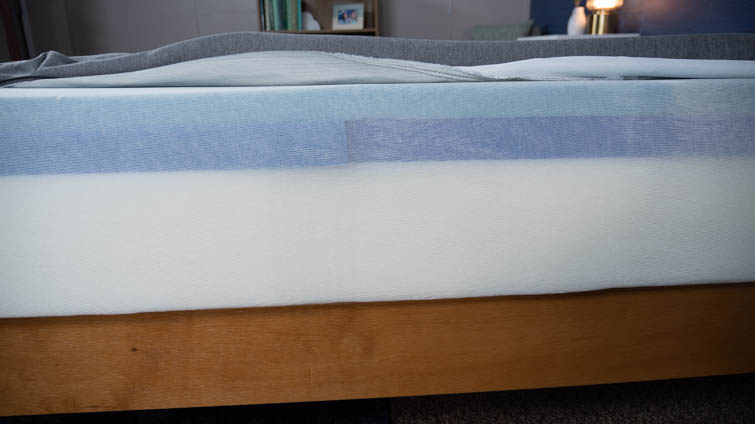
Nectar vs Casper: Best Qualities
Well folks, we’re almost done! After going over these beds’ unique constructions and feels, it’s time to make the final comparisons and figure out which one is right for you. Take a look below to see what I like best about each of these online mattresses.
Nectar Best Features
- If you’re a fan of memory foam, you’re bound to love the Nectar mattress. All its top layers are built with plenty of this pressure-relieving material.
- Strict side sleepers and back sleepers could find a lot to love in the Nectar mattress. As they press into the structure, they’re likely to experience plenty of deep pressure relief at the shoulders, hips, and lower back.
- Couples might appreciate the great motion isolation the Nectar offers. You’re unlikely to feel disturbed by a restless partner on this bed.
We recommend this mattress for the following sleeper types: Financing options are available for this mattress. I dreaded paying for a new mattress but my old one was 15 years old…buying a Nectar was the best choice I could have made! It is so comfortable and didn’t cost an arm and a leg. I would absolutely recommend this mattress to anyone!
The original Nectar mattress is a pressure-relieving, yet supportive, bed. It’s made with a thick layer of gel memory foam, which allows the sleeper to really sink into its surface.
We recommend this mattress for the following sleeper types: Financing options are available for this mattress. I dreaded paying for a new mattress but my old one was 15 years old…buying a Nectar was the best choice I could have made! It is so comfortable and didn’t cost an arm and a leg. I would absolutely recommend this mattress to anyone!
The original Nectar mattress is a pressure-relieving, yet supportive, bed. It’s made with a thick layer of gel memory foam, which allows the sleeper to really sink into its surface.
We recommend this mattress for the following sleeper types: Financing options are available for this mattress. I dreaded paying for a new mattress but my old one was 15 years old…buying a Nectar was the best choice I could have made! It is so comfortable and didn’t cost an arm and a leg. I would absolutely recommend this mattress to anyone!
Nectar Mattress
Material
Foam
Trial Period
365 nights
Shipping Method
Free shipping
Firmness
Medium-soft: 6/10
Warranty
Lifetime warranty
Price Range
$$$$$
Joint Pain
This bed is perfect for anyone suffering from joint pain.
Hip Pain
This bed is perfect for anyone suffering from hip pain.
Back Sleeping
Ideal for lightweight and average weight back sleepers.
Side Sleeping
Ideal for lightweight and average weight side sleepers.
Financing Options
Nectar Mattress

Material
Foam
Warranty
Lifetime warranty
Firmness
Medium-soft: 6/10
Shipping Method
Free shipping
Trial Period
365 nights
Price Range
$$$$$
Joint Pain
This bed is perfect for anyone suffering from joint pain.
Hip Pain
This bed is perfect for anyone suffering from hip pain.
Back Sleeping
Ideal for lightweight and average weight back sleepers.
Side Sleeping
Ideal for lightweight and average weight side sleepers.
Financing Options

Nectar Mattress
Material
Foam
Firmness
Medium-soft: 6/10
Trial Period
365 nights
Warranty
Lifetime warranty
Shipping Method
Free shipping
Price Range
$$$$$
Joint Pain
This bed is perfect for anyone suffering from joint pain.
Hip Pain
This bed is perfect for anyone suffering from hip pain.
Back Sleeping
Ideal for lightweight and average weight back sleepers.
Side Sleeping
Ideal for lightweight and average weight side sleepers.
Financing Options
Casper Best Features
- The Casper could be a great fit for those who struggle with back pain thanks to its zoned support layer, which helps to set the spine in a neutral line.
- Combination sleepers should enjoy the responsiveness of the Casper mattress, which makes it easy to move around and change positions at night.
- Sleepers who would rather feel more lifted up by a mattress than hugged by it will like the Casper.
We recommend this mattress for the following sleeper types: Financing options are available for this mattress. "From the delivery of the box to the magical unfolding of the king size mattress to the first time laying on the bed, all smiles here! I have traveled for work for years, often sleeping on different beds at different hotels night after night."
The Casper Original is an all-foam mattress that is a great option for back sleepers who want a balance of support and pressure relief. Combination sleepers will appreciate this mattress's responsiveness, which makes it easy to change positions throughout the night.
We recommend this mattress for the following sleeper types: Financing options are available for this mattress. "From the delivery of the box to the magical unfolding of the king size mattress to the first time laying on the bed, all smiles here! I have traveled for work for years, often sleeping on different beds at different hotels night after night."
The Casper Original is an all-foam mattress that is a great option for back sleepers who want a balance of support and pressure relief. Combination sleepers will appreciate this mattress's responsiveness, which makes it easy to change positions throughout the night.
We recommend this mattress for the following sleeper types: Financing options are available for this mattress. "From the delivery of the box to the magical unfolding of the king size mattress to the first time laying on the bed, all smiles here! I have traveled for work for years, often sleeping on different beds at different hotels night after night."
Casper Original Mattress
Material
Foam
Trial Period
100 nights
Shipping Method
Free shipping
Firmness
Firm: 7/10
Warranty
10-year limited warranty
Price Range
$$$$$
Couples
This bed has great motion isolation so you will not feel your partner tossing and turning at night.
Back Pain
This bed is perfect for anyone suffering from back pain.
Financing Options
Casper Original Mattress

Material
Foam
Warranty
10-year limited warranty
Firmness
Firm: 7/10
Shipping Method
Free shipping
Trial Period
100 nights
Price Range
$$$$$
Couples
This bed has great motion isolation so you will not feel your partner tossing and turning at night.
Back Pain
This bed is perfect for anyone suffering from back pain.
Financing Options

Casper Original Mattress
Material
Foam
Firmness
Firm: 7/10
Trial Period
100 nights
Warranty
10-year limited warranty
Shipping Method
Free shipping
Price Range
$$$$$
Couples
This bed has great motion isolation so you will not feel your partner tossing and turning at night.
Back Pain
This bed is perfect for anyone suffering from back pain.
Financing Options
Comparing Company Policies
Nectar
- Sleep Trial Period — 365 nights
- Shipping — Free
- Warranty — Lifetime
Casper
- Sleep Trial Period — 100 nights
- Shipping — Free
- Warranty — 10 Years
Comparing Nectar and Casper Customer Service
I’ve also rated each company’s customer service team based on my personal experiences with each. Possible ratings include Poor, Satisfactory, Great, and Stellar.
Nectar Sleepopolis Customer Service Rating
Stellar: I was immediately paired with a thoughtful agent, and he even offered to get on the phone with me to help place my order.
Casper Sleepopolis Customer Service Rating
Stellar: I was immediately paired with a helpful agent who answered all my questions about Casper’s warranty thoroughly and transparently.
Comparing Other Models from Nectar and Casper
Though we’ve been focusing exclusively on the original Nectar and Casper mattresses, they aren’t the only beds these brands sell. So, to contextualize our comparison a little bit more, let’s take a peek at some of Nectar and Casper’s other models.
Nectar Premier
- The Nectar Premier is another soft memory foam mattress ideal for anyone who likes a plush feel.
- I would recommend the Premier for strict side sleepers looking for lots of pressure relief. It has thicker layers of memory foam than the original Nectar, so it offers even more cushion.
- The Nectar Premier sleeps cooler than the original Nectar thanks to Phase Change Material in its top layer.
- For more on this bed, check out the full Nectar Premier mattress review.
We recommend this mattress for the following sleeper types: Financing options are available for this mattress. After looking for three years and trying three different types of mattresses, we found the one that is just right. Our Nectar mattress is just firm enough yet cozy and comfy too. I no longer wake up with my hips and lower back hurting and my husband’s neck pain is gone. If you’ve been searching for the perfect mattress, this is it!
The Nectar Premier mattress is a medium-soft memory foam mattress, making it a great fit for side sleepers or those who deal with shoulder or hip pain. It also sleeps very cool, an added bonus!
We recommend this mattress for the following sleeper types: Financing options are available for this mattress. After looking for three years and trying three different types of mattresses, we found the one that is just right. Our Nectar mattress is just firm enough yet cozy and comfy too. I no longer wake up with my hips and lower back hurting and my husband’s neck pain is gone. If you’ve been searching for the perfect mattress, this is it!
The Nectar Premier mattress is a medium-soft memory foam mattress, making it a great fit for side sleepers or those who deal with shoulder or hip pain. It also sleeps very cool, an added bonus!
We recommend this mattress for the following sleeper types: Financing options are available for this mattress. After looking for three years and trying three different types of mattresses, we found the one that is just right. Our Nectar mattress is just firm enough yet cozy and comfy too. I no longer wake up with my hips and lower back hurting and my husband’s neck pain is gone. If you’ve been searching for the perfect mattress, this is it!
Nectar Premier Mattress
Material
Foam
Trial Period
365 nights
Shipping Method
Free shipping
Firmness
Medium-soft: 6/10
Warranty
Lifetime warranty
Price Range
$$$$$
Back Sleeping
Ideal for lightweight and average weight back sleepers.
Side Sleeping
Ideal for lightweight and average weight side sleepers.
Financing Options
Nectar Premier Mattress

Material
Foam
Warranty
Lifetime warranty
Firmness
Medium-soft: 6/10
Shipping Method
Free shipping
Trial Period
365 nights
Price Range
$$$$$
Back Sleeping
Ideal for lightweight and average weight back sleepers.
Side Sleeping
Ideal for lightweight and average weight side sleepers.
Financing Options

Nectar Premier Mattress
Material
Foam
Firmness
Medium-soft: 6/10
Trial Period
365 nights
Warranty
Lifetime warranty
Shipping Method
Free shipping
Price Range
$$$$$
Back Sleeping
Ideal for lightweight and average weight back sleepers.
Side Sleeping
Ideal for lightweight and average weight side sleepers.
Financing Options
Nectar Premier Copper
- The Premier Copper is a medium-firm to firm memory foam mattress that feels firmer than the original Nectar and has slower-moving foam.
- The Premier Copper is the most cooling Nectar mattress available.
- The Nectar Premier Copper is more expensive than the original Nectar.
- Learn more in the full Nectar Premier Copper mattress review.
We recommend this mattress for the following sleeper types: Financing options are available for this mattress. The cooling technology in this mattress sets it apart. A lot of memory foam mattresses trap body heat and sleep hot, while the Nectar Premier Copper works to fix this issue, and sleeps cooler than any other mattress in the Nectar Sleep all-foam line.
We recommend this mattress for the following sleeper types: Financing options are available for this mattress. The cooling technology in this mattress sets it apart. A lot of memory foam mattresses trap body heat and sleep hot, while the Nectar Premier Copper works to fix this issue, and sleeps cooler than any other mattress in the Nectar Sleep all-foam line.
We recommend this mattress for the following sleeper types: Financing options are available for this mattress.Nectar Premier Copper Mattress
Material
Foam
Trial Period
365 nights
Shipping Method
Free shipping
Firmness
Firm: 7/10
Warranty
Lifetime warranty
Price Range
$$$$$
Hot Sleepers
If you often overheat while you sleep, this mattress should help you stay cool.
Back Sleeping
Ideal for lightweight and average weight back sleepers.
Side Sleeping
Ideal for lightweight and average weight side sleepers.
Financing Options
Nectar Premier Copper Mattress
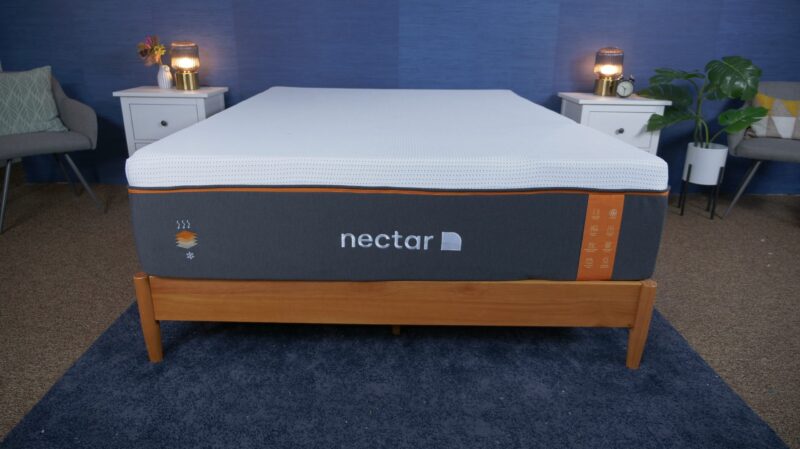
Material
Foam
Warranty
Lifetime warranty
Firmness
Firm: 7/10
Shipping Method
Free shipping
Trial Period
365 nights
Price Range
$$$$$
Hot Sleepers
If you often overheat while you sleep, this mattress should help you stay cool.
Back Sleeping
Ideal for lightweight and average weight back sleepers.
Side Sleeping
Ideal for lightweight and average weight side sleepers.
Financing Options

Nectar Premier Copper Mattress
Material
Foam
Firmness
Firm: 7/10
Trial Period
365 nights
Warranty
Lifetime warranty
Shipping Method
Free shipping
Price Range
$$$$$
Hot Sleepers
If you often overheat while you sleep, this mattress should help you stay cool.
Back Sleeping
Ideal for lightweight and average weight back sleepers.
Side Sleeping
Ideal for lightweight and average weight side sleepers.
Financing Options
Casper Hybrid
- The Casper Hybrid is exactly like the original Casper, but it uses a pocketed coil support system instead of a high-density foam base.
- Combination sleepers might like the bouncy feel of this hybrid bed.
- The Casper Hybrid is more expensive than the original Casper mattress.
- Learn more in the full Casper Hybrid mattress review.
If you’re looking for a bouncy and supportive structure, the Casper Hybrid is most definitely the bed for you. It has a buoyant feel, but still offers some nice pressure relief, making it an ideal choice for back sleepers and combination sleepers.
If you’re looking for a bouncy and supportive structure, the Casper Hybrid is most definitely the bed for you. It has a buoyant feel, but still offers some nice pressure relief, making it an ideal choice for back sleepers and combination sleepers.
Casper Hybrid Mattress
Material
Hybrid
Trial Period
100 nights
Shipping Method
Free shipping
Firmness
Medium-firm: 6.5/10
Warranty
10-year limited warranty
Price Range
$$$$$
Casper Hybrid Mattress
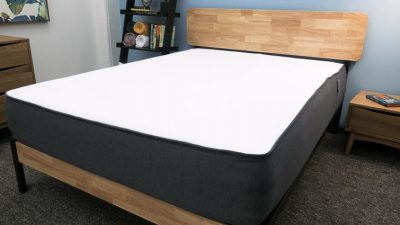
Material
Hybrid
Warranty
10-year limited warranty
Firmness
Medium-firm: 6.5/10
Shipping Method
Free shipping
Trial Period
100 nights
Price Range
$$$$$

Casper Hybrid Mattress
Material
Hybrid
Firmness
Medium-firm: 6.5/10
Trial Period
100 nights
Warranty
10-year limited warranty
Shipping Method
Free shipping
Price Range
$$$$$
Casper Nova Hybrid
- The Nova is a soft hybrid mattress.
- This Casper bed sleeps cooler than the original Casper mattress.
- Like the original Casper, the Nova features zoned support.
- Find out more in the full Casper Nova Hybrid mattress review.
We recommend this mattress for the following sleeper types: Financing options are available for this mattress. I think this mattress could be a great fit for side sleepers. It’s super soft, so it provides plenty of pressure relief at the shoulders and hips. I also think combo sleepers could find a lot to love in this bouncy, hybrid bed!
We recommend this mattress for the following sleeper types: Financing options are available for this mattress. I think this mattress could be a great fit for side sleepers. It’s super soft, so it provides plenty of pressure relief at the shoulders and hips. I also think combo sleepers could find a lot to love in this bouncy, hybrid bed!
We recommend this mattress for the following sleeper types: Financing options are available for this mattress.Casper Nova Hybrid Mattress
Material
Hybrid
Trial Period
100 nights
Shipping Method
Free shipping
Firmness
Soft: 5.5/10
Warranty
10-year limited warranty
Price Range
$$$$$
Back Pain
This bed is perfect for anyone suffering from back pain.
Back Sleeping
Ideal for lightweight and average weight back sleepers.
Stomach Sleeping
Ideal for lightweight and average weight stomach sleepers.
Financing Options
Casper Nova Hybrid Mattress
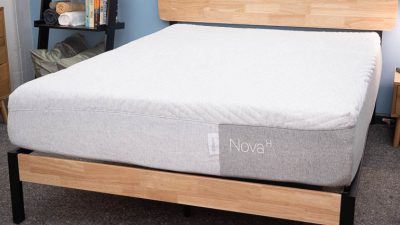
Material
Hybrid
Warranty
10-year limited warranty
Firmness
Soft: 5.5/10
Shipping Method
Free shipping
Trial Period
100 nights
Price Range
$$$$$
Back Pain
This bed is perfect for anyone suffering from back pain.
Back Sleeping
Ideal for lightweight and average weight back sleepers.
Stomach Sleeping
Ideal for lightweight and average weight stomach sleepers.
Financing Options

Casper Nova Hybrid Mattress
Material
Hybrid
Firmness
Soft: 5.5/10
Trial Period
100 nights
Warranty
10-year limited warranty
Shipping Method
Free shipping
Price Range
$$$$$
Back Pain
This bed is perfect for anyone suffering from back pain.
Back Sleeping
Ideal for lightweight and average weight back sleepers.
Stomach Sleeping
Ideal for lightweight and average weight stomach sleepers.
Financing Options
Casper Wave Hybrid
- This is Casper’s luxury hybrid option, so it’s more expensive than the other Caspers.
- The Wave Hybrid is a great option for heavy people who struggle with joint pain.
- Combination sleepers should enjoy this hybrid’s responsive feel.
- Interested? Head over to the Casper Wave Hybrid mattress review.
We recommend this mattress for the following sleeper types: Financing options are available for this mattress. The Wave Hybrid does a great job combining support and softness to strike a great balance between pressure relief and lift. This is especially nice for sleepers who struggle with back pain or heavy people in need of durable support.
We recommend this mattress for the following sleeper types: Financing options are available for this mattress. The Wave Hybrid does a great job combining support and softness to strike a great balance between pressure relief and lift. This is especially nice for sleepers who struggle with back pain or heavy people in need of durable support.
We recommend this mattress for the following sleeper types: Financing options are available for this mattress.Casper Wave Hybrid Mattress
Material
Hybrid
Trial Period
100 nights
Shipping Method
Free shipping
Firmness
Medium-soft: 6/10
Warranty
10-year limited warranty
Price Range
$$$$$
Back Pain
This bed is perfect for anyone suffering from back pain.
Back Sleeping
Ideal for lightweight and average weight back sleepers.
Side Sleeping
Ideal for lightweight, average weight, and heavyweight side sleepers.
Financing Options
Casper Wave Hybrid Mattress
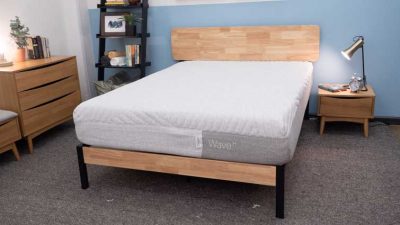
Material
Hybrid
Warranty
10-year limited warranty
Firmness
Medium-soft: 6/10
Shipping Method
Free shipping
Trial Period
100 nights
Price Range
$$$$$
Back Pain
This bed is perfect for anyone suffering from back pain.
Back Sleeping
Ideal for lightweight and average weight back sleepers.
Side Sleeping
Ideal for lightweight, average weight, and heavyweight side sleepers.
Financing Options

Casper Wave Hybrid Mattress
Material
Hybrid
Firmness
Medium-soft: 6/10
Trial Period
100 nights
Warranty
10-year limited warranty
Shipping Method
Free shipping
Price Range
$$$$$
Back Pain
This bed is perfect for anyone suffering from back pain.
Back Sleeping
Ideal for lightweight and average weight back sleepers.
Side Sleeping
Ideal for lightweight, average weight, and heavyweight side sleepers.
Financing Options
Other Common Nectar and Casper Comparisons
Still not sure which of these beds to choose? Take a look at a few other common comparisons before you decide!
Nectar vs
- Nectar vs DreamCloud
- Nectar vs Tuft & Needle
- Nectar vs Purple
- Nectar vs Leesa
- Nectar vs Layla
- Nectar vs GhostBed
Casper vs
- Casper vs Helix
- Casper vs Leesa
- Casper vs WinkBeds
- Casper vs Purple
- Casper vs DreamCloud
- Casper vs Endy
- Casper vs Lull
- Casper vs Puffy
- Casper vs Layla
- Casper vs Brooklyn Bedding
- Casper vs Saatva
- Casper vs GhostBed
Our Review Process
At Sleepopolis, our team of Certified Sleep Science Coaches personally test and review each mattress. We start by unboxing the mattress to figure out how difficult (or easy) it is to get the mattress from the box to the bed. Then, we spend time laying on the bed in different positions, taking time to assess it on our backs, stomachs, and sides. Next, we perform our Sleepopolis tests, using specialized tools to measure qualities like motion transfer, bounce, and pressure relief. Our last step is to open up the mattress and take a look at each layer. These steps allow us to give our final verdict on the mattress. Jump back to our mattress picks.
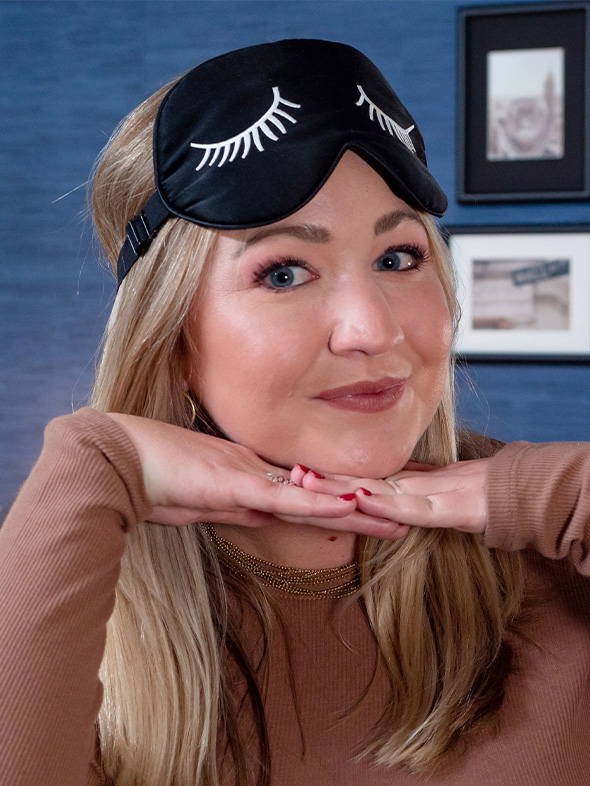
Bridget Chapman
Senior Product Editor
About Author
Bridget is a Certified Sleep Science Coach and senior editor here at Sleepopolis. From testing mattresses to writing about various sleep health topics, her goal is to help you get a good night’s sleep. You can also find her in videos on our YouTube channel. Bridget graduated magna cum laude from San Diego State University with a degree in journalism and a minor in English. Before joining the Sleepopolis team, she was a TV news reporter and worked in cities across the country. She loves spending time outdoors, checking out new restaurants, snuggling with her pets, and of course — getting some quality Zzz’s.
Combination Sleeper


